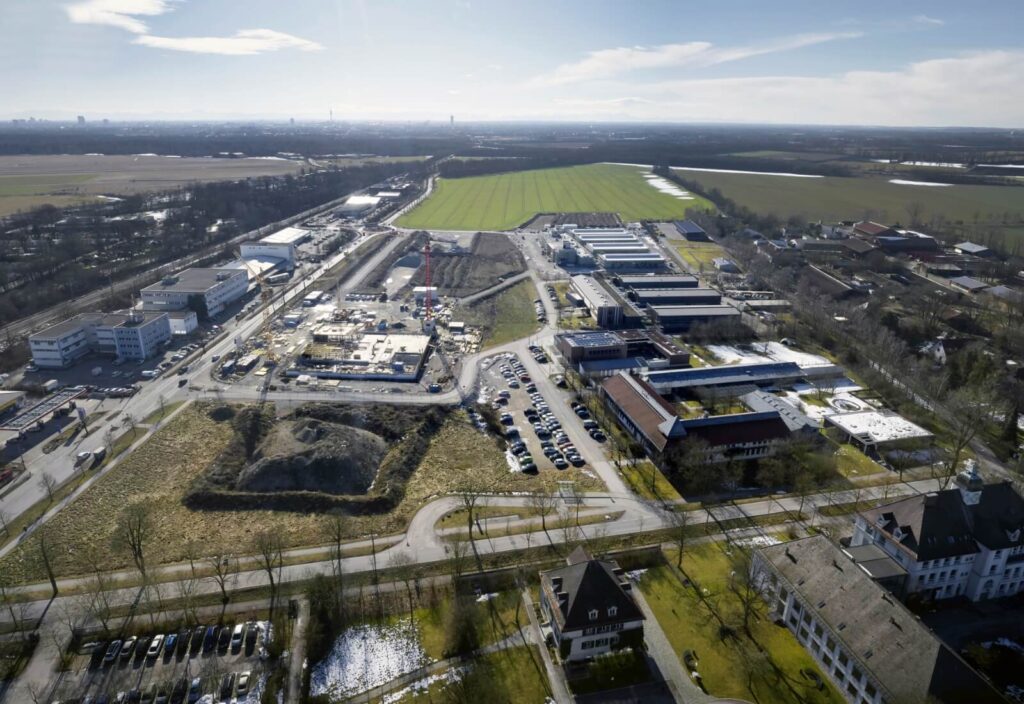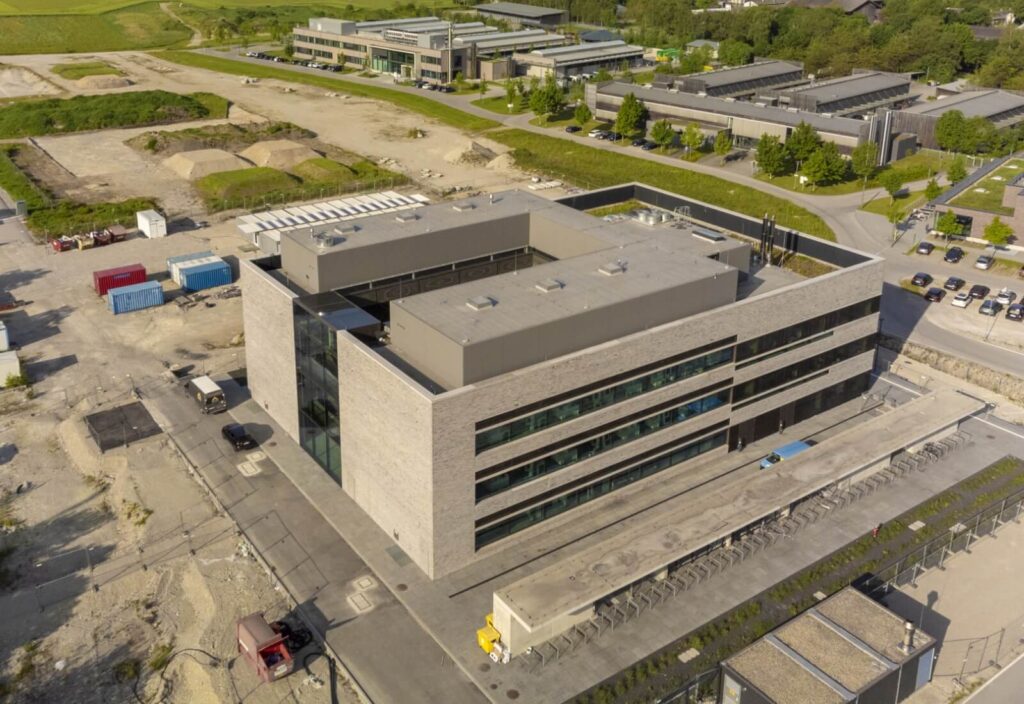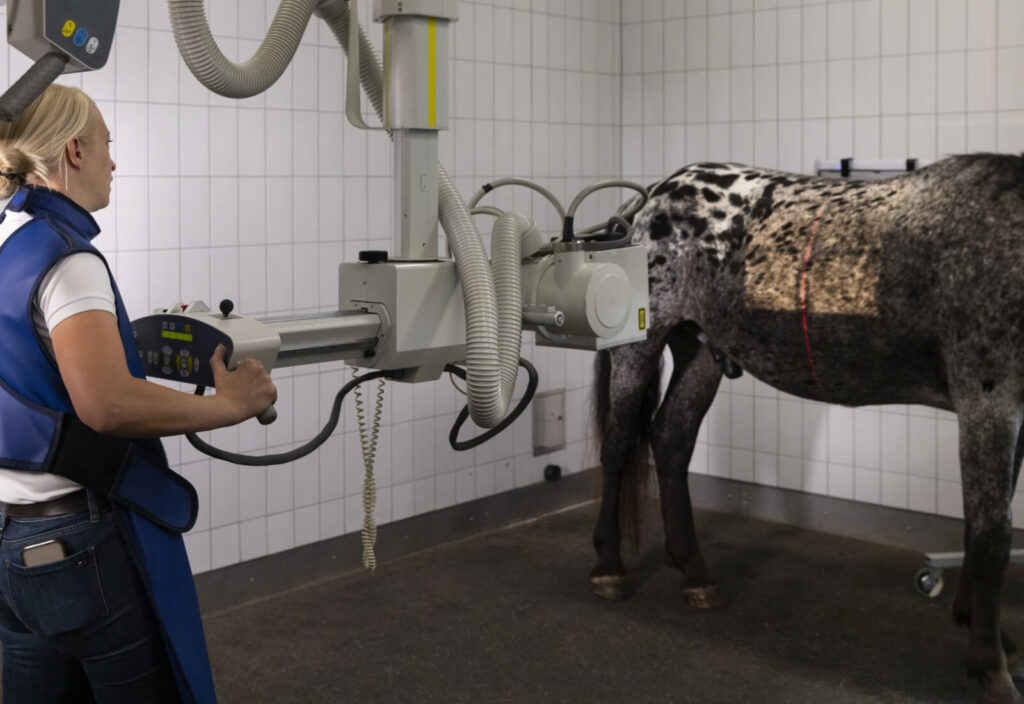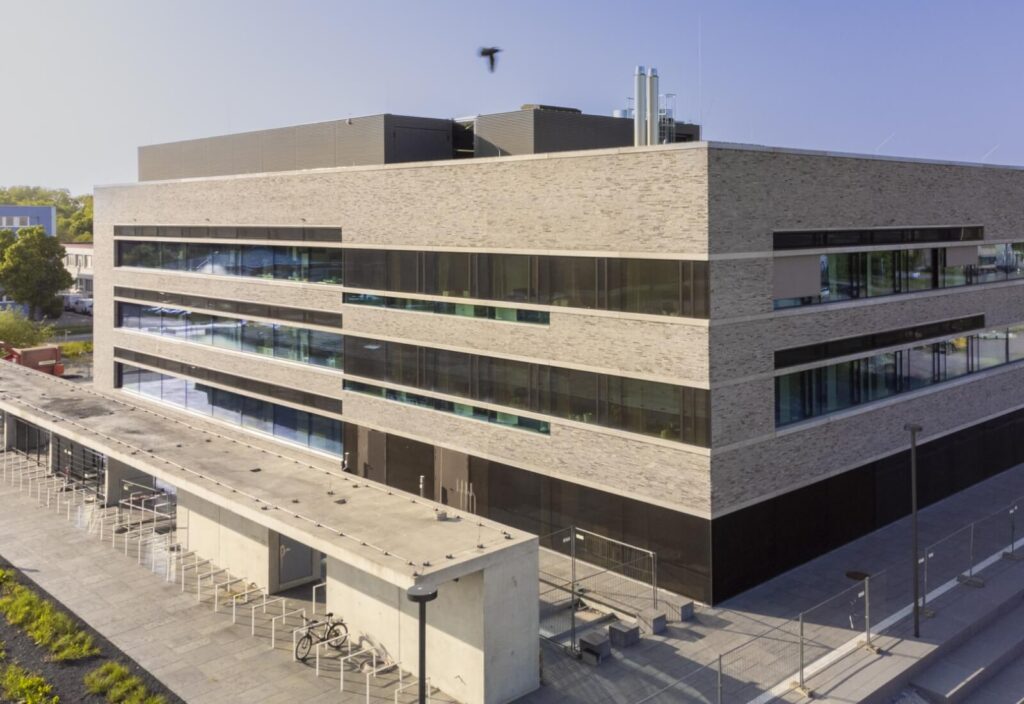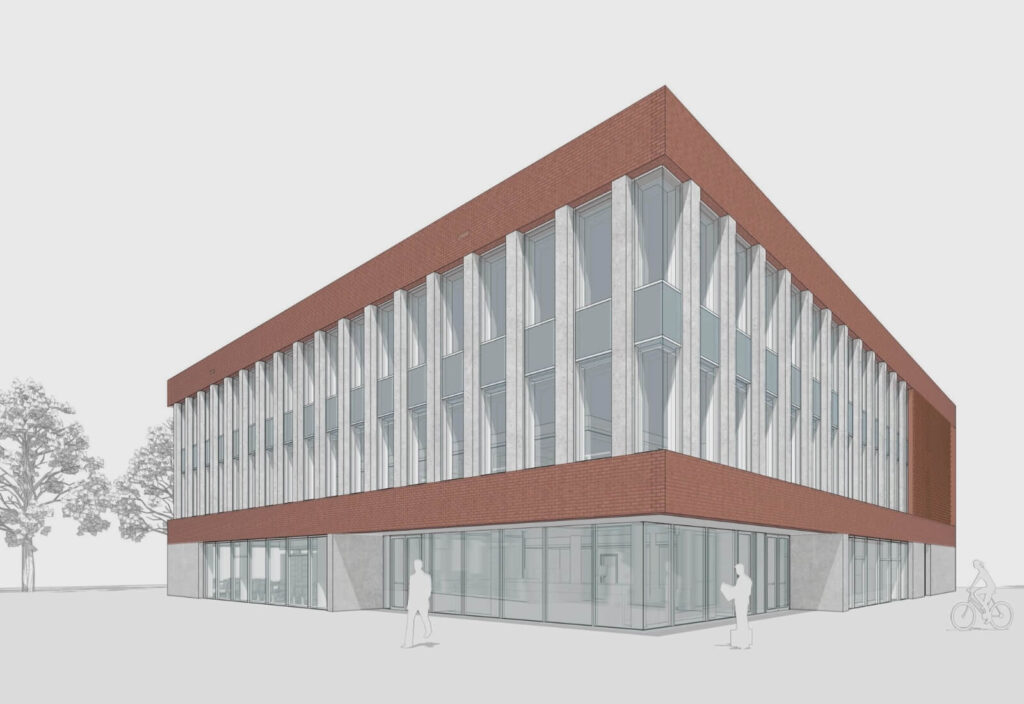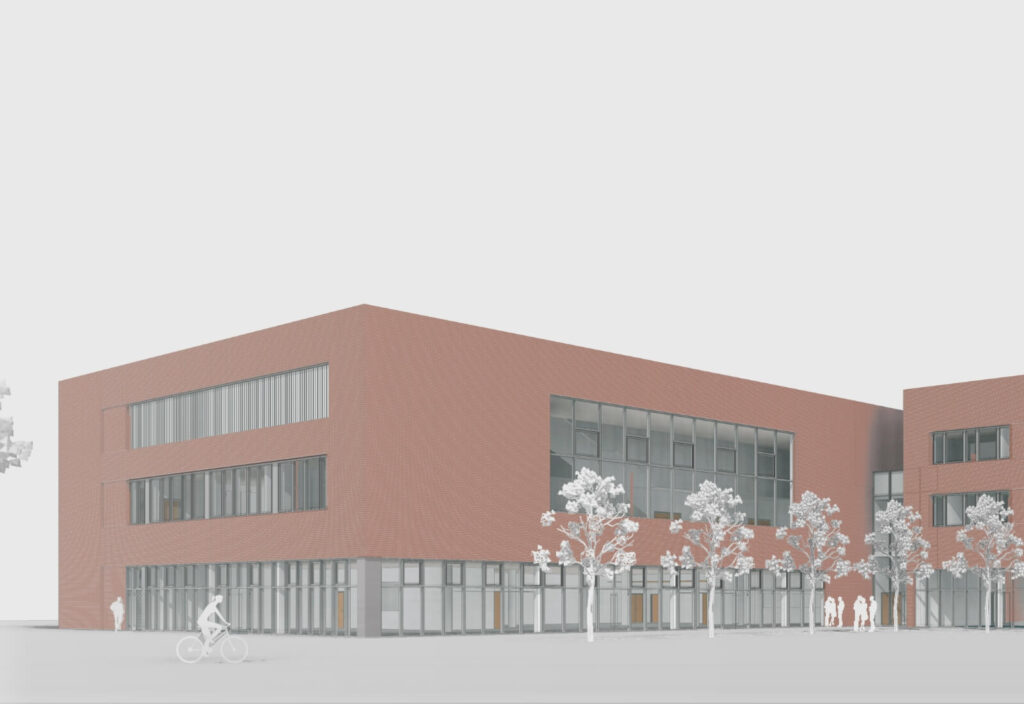
Reptiles and Ornamental Fish
medizinischen Fakultät
Campus Oberschleissheim
Several Faculty of Veterinary Medicine institutes and clinics, along with the Teaching and Research Farm, are located at Oberschleissheim, around 15 kilometers from the city center. The entire Faculty of Veterinary Medicine, which has been primarily situated on Campus English Garden to date, will be relocated in stages to the 15-hectare site at Oberschleissheim. With some 2,000 students and doctoral researchers and 600 employees, the campus will be one of the largest research and education centers for veterinarians in Europe when completed around 10 years from now.
Campus development
The campus has a clear layout. First of all, the various clinics are located at the western end. The first new building on the campus was the Clinic for Birds, which opened in 1992. It was extended in 2003 to accommodate the care of reptiles, amphibians, and ornamental fish as well. This was followed by the Clinic for Pigs and Ruminants, a central building containing a lecture hall and cafeteria, and, most recently, the Equine Clinic in 2022. The complex is due to be completed with the construction of a new Small Animal Clinic.
The eastern part of the campus is dedicated to research, studying, and administration. In 2023, the Institute of Microbiology was inaugurated, which is set to receive a second building in the medium term. The Buildings for Animal Anatomy and Pathology are currently under construction. Between the two building complexes, a central building is planned with a main cafeteria, two large lecture halls, seminar rooms, and a central skills lab, in which students can practice on synthetic animal models. At the northern end of the campus, it is planned to build a spacious new specialist library with modern study facilities and a building for the Department of Veterinary Sciences, which will house the Chairs of Physiology, Physiological Chemistry, Pharmacology, and Animal Protection.
The centerpiece of the campus will be an extensive park-like greenspace, which will connect both sections. Walkways and seating options will offer an inviting atmosphere for study and relaxation, enhancing campus life.
The current construction stage is due to be completed in 2029, with the Small Animal Clinic and the second microbiology building, which are still in the planning and design phase, following somewhat later. If additional buildings are needed in the future, that will not be a problem, as there are further spaces into which the campus can expand.
Equine Clinic
Opened in 2022, the Equine Clinic is considered the largest and most modern facility of its kind in southern Germany, offering optimal conditions for research, teaching, and the treatment of horses. The clinic houses various disciplines such as surgery, internal medicine, foal intensive care, and reproductive medicine, and is specialized in the treatment of elite performance horses. State-of-the-art equipment such as CT and MRI scanners enhance the facility’s diagnostic capabilities. With a floor space of 3,600 square meters, the clinic is able to treat around 800 horses every year as inpatients and 400 as outpatients. Constructed according to the latest energy efficiency standards, the building has a power plant in its basement that supplies the entire campus grounds with heating and cooling. The majority of power used is supplied by shallow geothermal energy.
News from Equine Clinic
The new LMU building in Oberschleissheim near Munich was inaugurated today. Inpatient facilities at the hospital can treat 800 horses per year.
Institute of Infection Medicine and Zoonoses (Microbiology)
The Institute of Infection Medicine and Zoonoses, which was inaugurated in 2023, was designed to facilitate outstanding research into infectious diseases that are transmitted between animals and people and the development of methods to prevent their spread. Over a floor space of 2,885 square meters, research laboratories, seminar rooms, and offices offer optimal conditions for cutting-edge research. The institute is home to the Chair of Bacteriology and Mycology and the Chair of Virology. Meanwhile, the animal facility meets the highest safety standards and allows the validation of research results on animal models. In the future, the facility is to be made available to other research institutes inside LMU and from other organizations.
Over the next few years, the institute will be completed by an annex building, which will house the thematically linked Chairs of Physiology, Physiological Chemistry, Pharmacology, and Animal Protection. The establishment of Core Facilities in fields such as genomics and proteomics facilitates synergies in research and learning, as does the creation of a shared central experimental animal facility.
News from Microbiology
Today, LMU opens a state-of-the-art building for the Institute of Infection Medicine and Zoonoses of the Faculty of Veterinary Medicine on Campus Oberschleissheim.
Institute of Animal Anatomy and Animal Pathology
Still housed for the time being in 1950s premises in the English Garden, the Animal Anatomy and Animal Pathology facilities are due to be brought together under one roof at Campus Oberschleissheim by 2027. A center of excellence for imaging techniques will be established, pooling expensive special equipment, so that the faculty can make optimal use of these technologies. State-of-the-art Core Facilities in fields such as physiology, physiological chemistry, and pharmacology will decisively strengthen the research potential of the faculty.
The new institute unites a hefty portion of veterinary education – anatomy in the pre-clinical and pathology in the clinical part of the curriculum. A lecture hall with 360 seats, preparation and dissection rooms, comprehensive exhibition galleries, modern presentation techniques such as plastination and 3D printing, and the incorporation of ultrasound laboratories all facilitate teaching according to the latest standards. In addition, the Animal Pathology facility performs important services for veterinary clinics, farmers, and zoos.

Rendering of new Animal Anatomy and Pathology building on Campus Oberschleissheim
© doranth post architekten GmbH
Core Facilities with library
The new veterinary library will have space for around 100,000 books and magazines, along with 140 individual workstations and modern group working rooms. A main cafeteria will offer some 500 seats for dining on campus as well as providing work opportunities outside of mealtimes. With the dean’s office, the office of the vice dean (students), the faculty student body office, and the examination office, the administration for the faculty will be united in one service center. Classrooms, including two large lecture halls, will ensure that large parts of veterinary education can take place in Oberschleissheim as of 2030.
News from the Campus Oberschleissheim
With the topping out ceremony for the Anatomy and Pathology building and the first ground being broken for the Faculty of Veterinary Medicine’s central building, LMU Munich’s campus in Oberschleissheim is expanding further and evolving into a one-of-a-kind education and research facility for veterinary medicine within Europe.



